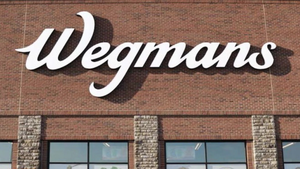Blue Apron turns to retail for distributionBlue Apron turns to retail for distribution
Meal kit delivery company said to seek supermarket partners
March 20, 2018

Subscription-based meal kit company Blue Apron said it will make its kits available in supermarkets by year-end, according to reports, as the company continues to struggle to make a profit through its delivery model.
The New York-based company has not disclosed which supermarkets it might partner with on the service, but has been in talks with multiple food retailers, including some that already sell their own meal kits in stores, Blue Apron executives told the Wall Street Journal.
“The access to consumers is much broader in this avenue than the avenue we’ve been operating in the past,” Blue Apron CEO Brad Dickerson told the newspaper.
Blue Apron could not be reached for comment for this article.
Some sources speculated that Minneapolis-based Target Corp. might be a good fit as a distribution partner for Blue Apron, given the retailer’s network of urban locations and its propensity to partner with name brands that have a strong consumer reputation.
By moving to distribute in stores rather than simply through online subscription-based deliveries, Blue Apron would be joining meal kit providers such as Plated, which was acquired by Albertsons last year and is being rolled out to that company’s stores, and Purple Carrot, which has made its meal kits available in select Whole Foods stores.
The move also comes as Walmart recently said it would roll out meal kits, which it will assemble in-store, to 2,000 of its deli departments this year. Several other retailers, including Kroger Co. and Publix Super Markets, have already rolled out their own brands of meal kits in stores.
In a recent report, research firm Nielsen said that although the majority of meal kits are currently purchased online, in-store meal kit sales grew rapidly in the past year — up 26.5%, to $154.6 million.
Nielsen said that for consumers, in-store meal kits offer unique advantages over those offered through subscription delivery services.
“In-store kits require less commitment than a paid subscription and offer more flexibility for retailers and suppliers to experiment with components and ‘levels’ of convenience that keep consumers coming back,” Nielsen said in the report.
The report found that 75% of meal kit dollar sales come from “quick kits,” which contain all ingredients and only take one or two steps to prepare.
Blue Apron’s shift to offering its products in-store comes as the company continues to struggle with the marketing costs of acquiring and retailing customers, as well as the operational costs of packaging and delivery. The company reported a loss of $210.1 million in its recently ended fiscal year, as customer orders dropped in the wake of a decrease in marketing.
Revenues for the year rose 11%, to $881.2 million, but were down 13% for the fourth quarter after the marketing pullback as the company invested in its Linden, N.J., fulfillment center operations.
In a conference call with analysts, the company hinted at the potential for additional partnerships, saying it was seeing promising results from working with Whole30 on a line of healthful meal kits.
“We plan to pursue additional partnership opportunities that align with our brand ethos and enable us to engage and expand our customer base by accommodating more lifestyle preferences and needs,” said Dickerson.
The company has also rolled out new meal kits that require less active work in the kitchen and/or cleanup, he said, and has also launched a new branding campaign.
Blue Apron is seeking to build “a strong consumer lifestyle brand that reinforces our identity — to not simply be a transactional e-commerce business, but play a more meaningful role in our customers' lives,” Dickerson said.
Ross Sandler, a San Francisco-based analyst with Barclays Capital, said he was encouraged by the company’s improving margins and the new brand campaign and partnerships, but said much work remains to be done at the struggling company.
“We continue to view the new brand campaign as early-stage and still subject to operational and competitive risk,” he said.
In a research note, Matthew Trusz, an analyst with Gabelli & Co., said he was bullish on Blue Apron’s prospects.
"Scale is everything for Blue Apron's model, and for this reason we consider brick-and-mortar retail highly attractive," he said in the note, according to a CNBC report.
Rolling out to retail will allow Blue Apron to make great use of its current infrastructure and reduce its shipping and packaging costs, he said.
Nielsen said it sees considerable upside for meal kits. The firm said about 9% of U.S. consumers have purchased a meal kit either online or in-store in the last six months, and 25% of consumers surveyed said they would be willing to do so in the next six months.
About the Author
You May Also Like






